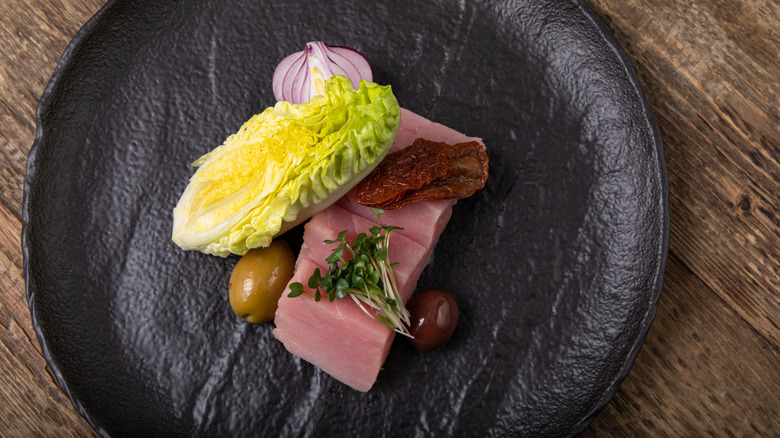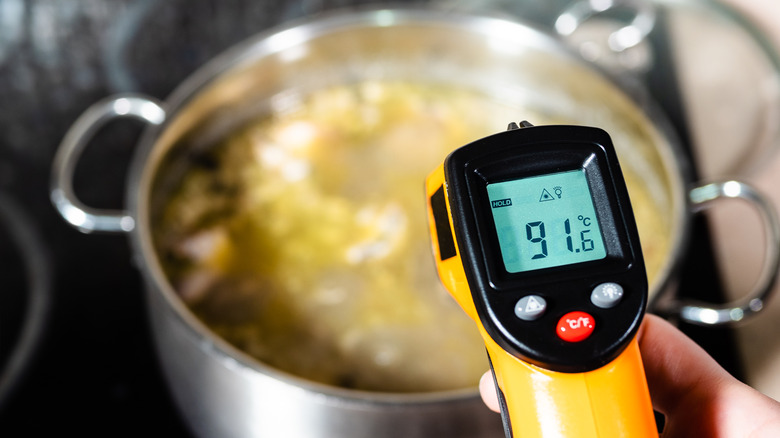The Temperature Tip You Need To Make Tuna Confit
There comes a time in every home cook's life when they level up. They start mincing vegetables faster. They're able to season food instinctively. And they begin to master interesting techniques like sous vide, bain-marie, and confit cooking.
Confit cooking, in particular, yields melty, butter-like textures and rich flavors within foods like egg yolks, goose legs, and duck (via Great British Chefs). Think of this as a giant fat or oil bath for such foods, where they gently cook over very low heat for a lengthy period of time, per Science of Cooking. This process helps to break down all that tough collagen, which makes the meat silky and perhaps even detached from the bone.
MasterClass explains that there are two major aspects of confit cooking: the salt cure and slow-cooking the meat in olive oil or meaty fats like chicken, duck, or goose fats. Salting and massaging the meat before its low and slow fat-based bath will take all that internal moisture out, which helps to make the finishing textures ultra-tender. After its massage, the meat should be completely covered in fat and left to simmer over low heat for a few hours.
Aside from meat, you can also confit herbs, spicy peppers, vegetables, and even fruit. But we suggest starting with fish because, as Science of Cooking explains, fish doesn't have as much collagen as land animals, so making something like tuna confit won't take as long.
But aim for this temperature
As previously mentioned, a successful confit method involves low temperatures and several hours of simmering time. This often includes temperatures of 225 to 275 degrees Fahrenheit and three or more hours of cooking, per Science of Cooking. That is, except when it comes to tuna.
The exact temperature and time frame will depend on the recipe you use, but we've seen heat ranging from 140 to 150 degrees Fahrenheit, per The City Cook and Taste Cooking. The former source suggests poaching the tuna in 140-degree oil for 10 minutes and then turning off the heat so the fish can cool down for another 10 minutes in the same batch of oil. The latter source recommends 150-degree oil and a nine-minute cooking time for the fish, but this time, removing the fish from the oil so it can cool.
If you don't have a thermometer to check for oil temperatures, just follow this tip from MasterClass: simmer some olive oil over low heat for 20 minutes, then remove the vessel from the heat. Add in your tuna, cover it with a lid, and cook the tuna for five minutes. And be sure to check for doneness before consuming!
Although this sounds like some complicated dish at a Michelin-starred restaurant, it's surprisingly easy to pull off for both beginners and seasoned home cooks. Just be sure to follow the above temperature rule for tender, rich, and buttery tuna confit.

